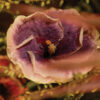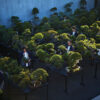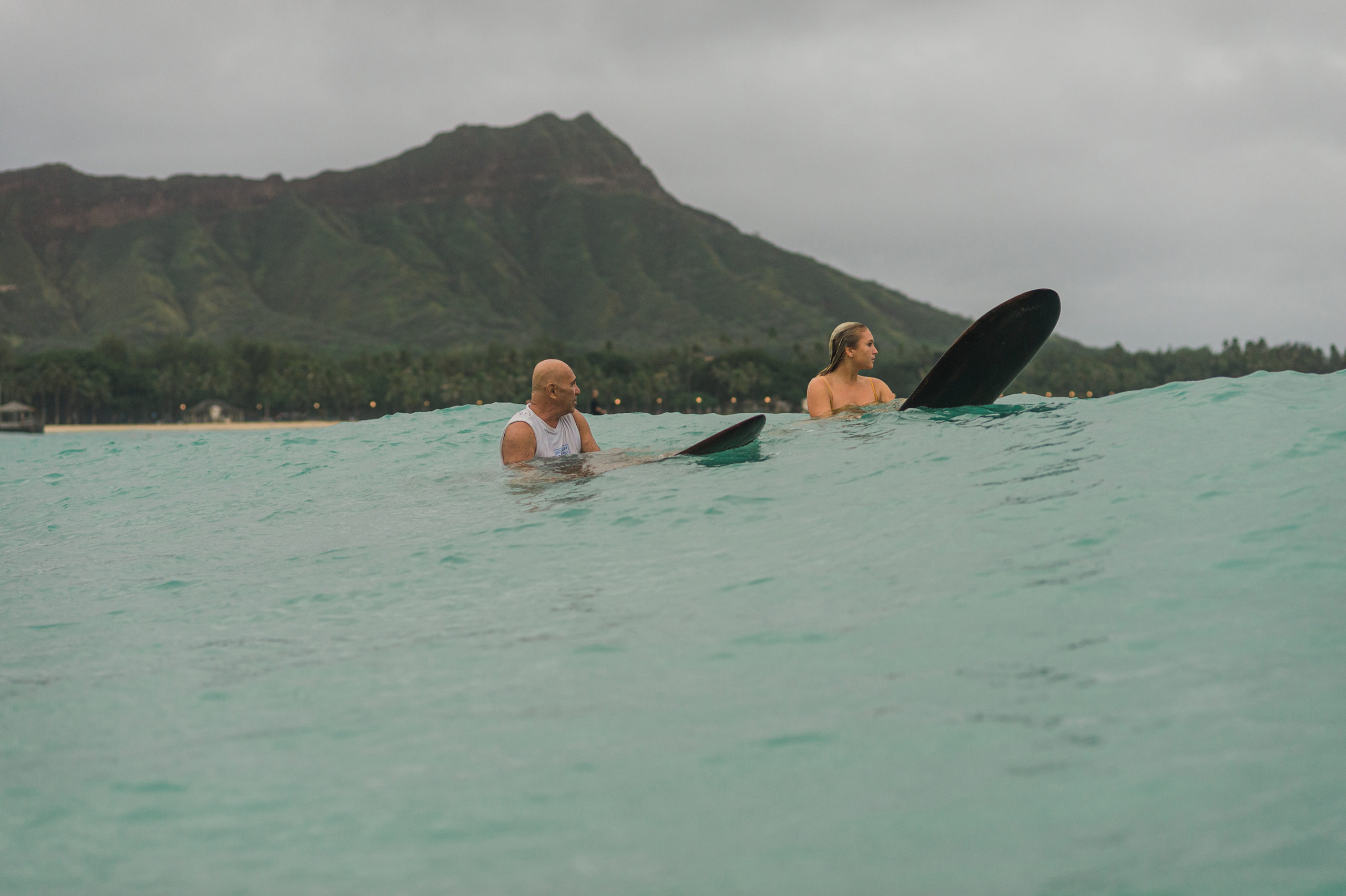Text by Leilani Marie Labong
Images by John Hook
The morning is cool and gray and the ocean is pumping out swell after foamy swell. It’s mid-January and the conditions are a little messy in Waikīkī, but nevertheless, it makes an amusing playground for skilled surfers, even the two daring souls who showed up with heavy wooden surfboards hand carved by Native Hawaiian craftsman Tom “Pōhaku” Stone, whose self-given Hawaiian name also means “stone,” in the tradition of ancient papa he‘e nalu.
“Maybe we should surf the shore break instead?” suggests Tom, half-joking, to his granddaughter Savanna Stone.
Just then, the 90-pound solid-redwood board the former semi-pro surfer lugged onto the beach—a replica of a kīko‘o owned by late Hawaiian surf legend Duke Kahanamoku, complete with his blocky monogram—tips over and conks him on the head. Savanna, who is 16 years old and a professional surfer, chuckles as she ignores his not-so-veiled plea, carefully maneuvering her 50-pound surfboard into the water.
“The wooden boards look and feel so natural in the water. It’s like they’re meant to be there.”
Savanna Stone
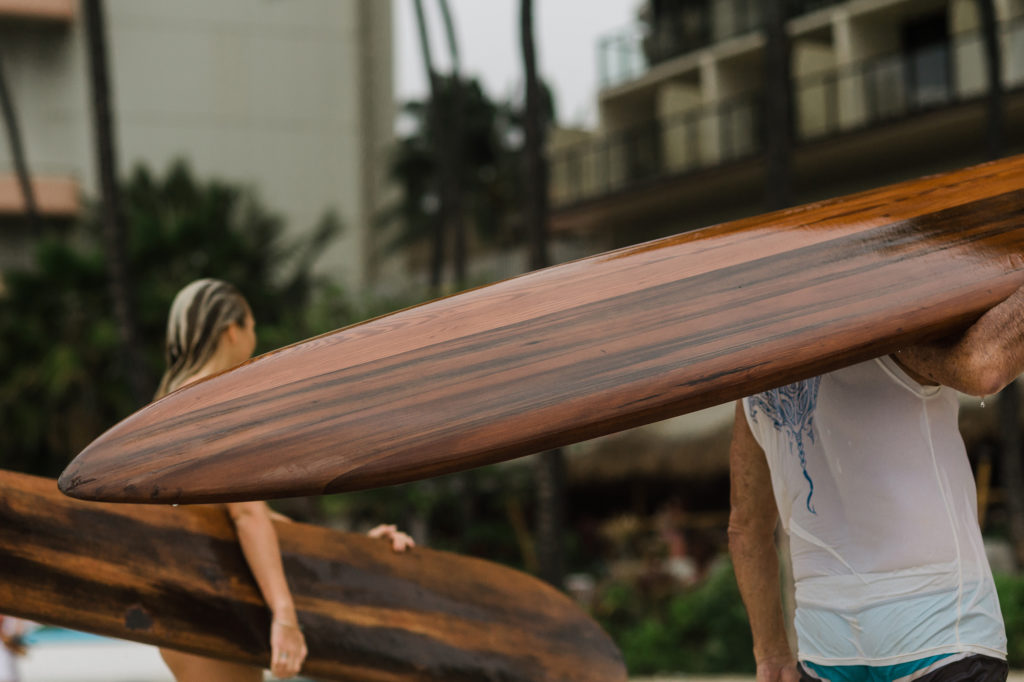
Paddling through the wave zone, she somehow makes navigating the kīko‘o—a slab of wiliwili around eight feet long with a flat deck and round bottom—appear no more difficult than her KT Surf Crusher, a fiberglass-covered, polyurethane slip of a thing.
The kīko‘o that Savanna is riding is quite special, a modern family heirloom and one of the first wooden boards ever carved by her grandfather, the 68-year-old patriarch of a large oceangoing ‘ohana including pro windsurfers Josh and Harley Stone, her father and older brother, respectively.
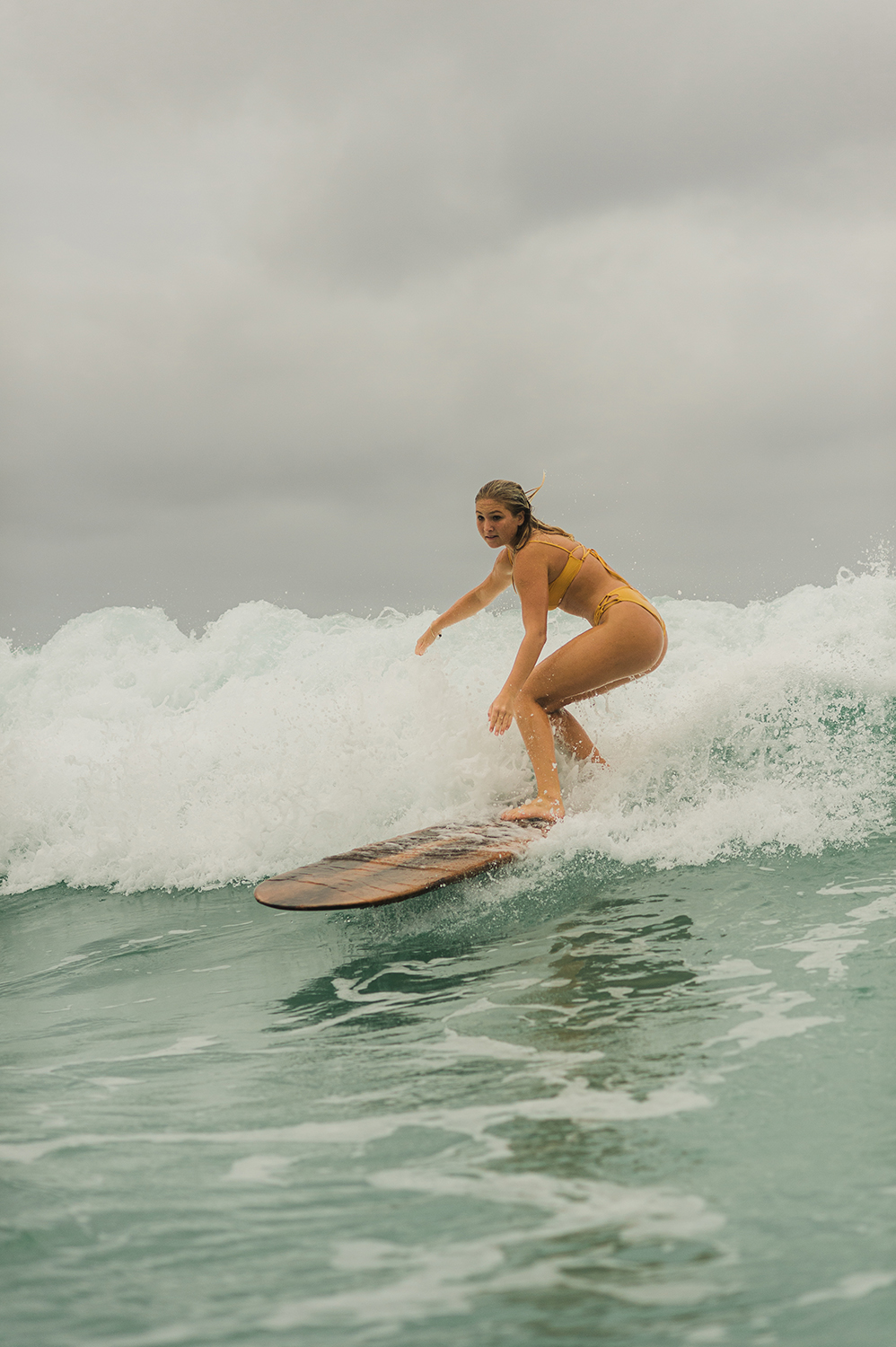
Not that any boards made in the shape of the 10 ancient Hawaiian surfcraft, including the nimble alaia (shortboard) and the more easygoing olo (longboard), could ever be ordinary, given their 800-year-old heritage that originated with the wooden planks Tahitian settlers brought to Hawai‘i in the 13th century.
Through documenting board shapes from surfing’s ancient history that were lost to time or replaced by more hydrodynamic shapes and materials in the 20th century, Tom more deeply connects new generations of surfers to the sport by riding waves like the ancestors.
“The wooden boards look and feel so natural in the water,” Savanna says. “It’s like they’re meant to be there.”
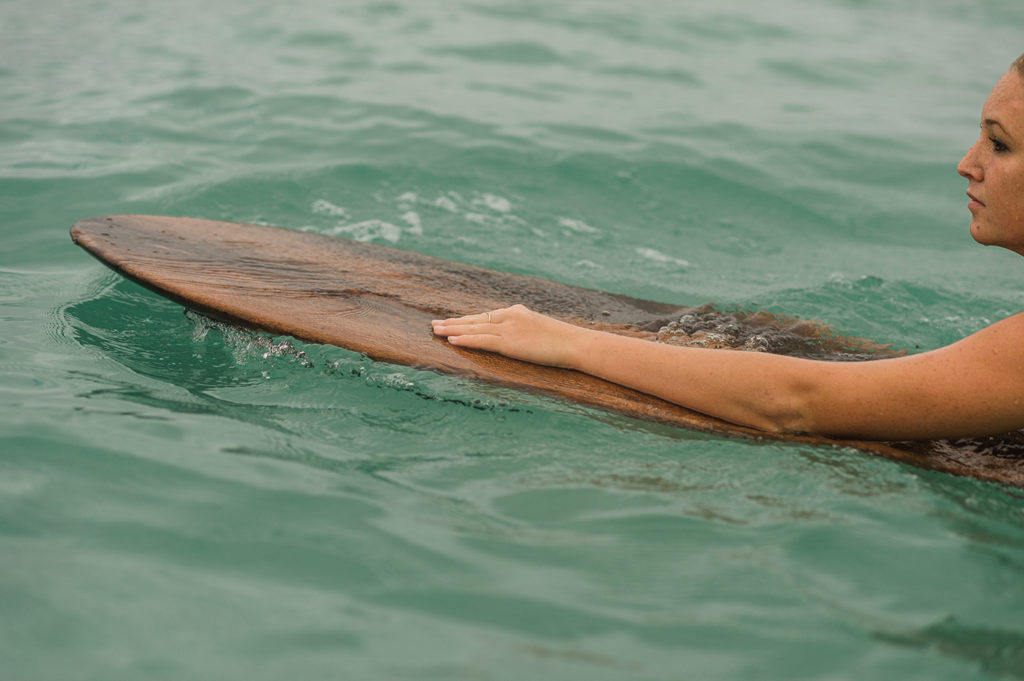
Once a regular outing, these grandfather-granddaughter surf sessions have become more sporadic. Savanna, who lives in Waimānalo, has been busy with school and surf competitions, and her “Papa,” as she affectionately refers to Tom, is completing his doctoral dissertation on the ritualism of surfing at the University of Hawai‘i at Mānoa.
But even an occasional dawn patrol for these two is more meaningful than most, since a family legacy is being shaped, one wave, one ride, one wipeout at a time. In the Stone family, Savanna may be the next to continue the tradition of surfing and carving.
“It skipped a generation, but I’m teaching her like my dad taught me, out of his aloha,” Tom says.
As an aspiring surfer growing up in Kailua, Tom yearned, in the way that unrelenting 8-year-olds do, for an expensive, newfangled surfboard. His father, who made a modest living as a police officer, instead made him a wooden one, inspired by the boards of their Hawaiian ancestors.
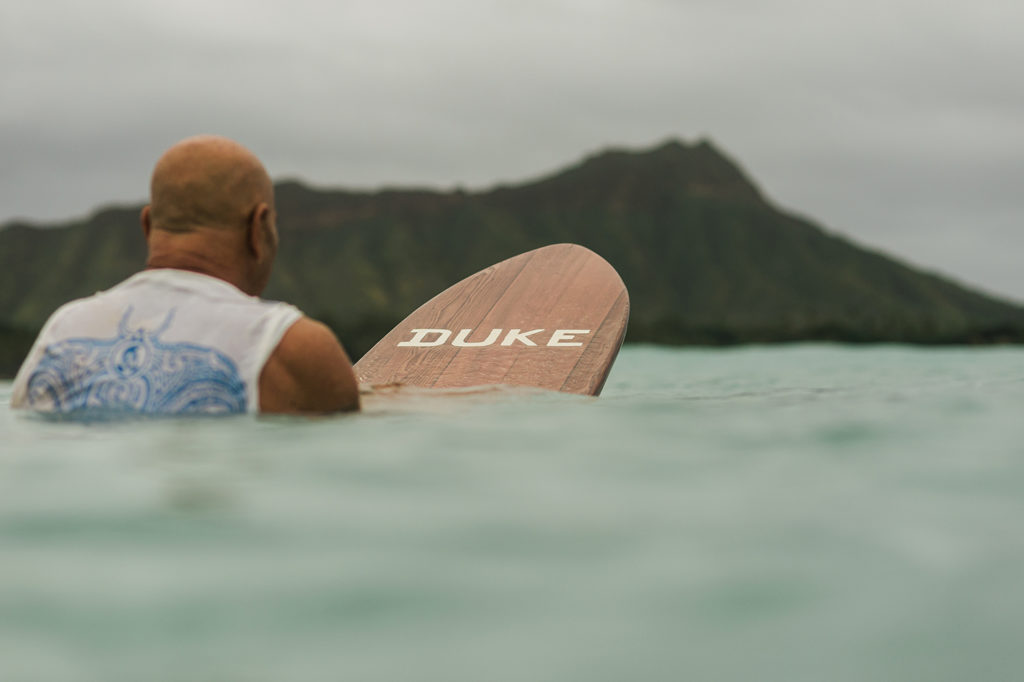
“He carved it every evening for a month,” Tom says. “I watched him do it, learning. But when it was finished, it wasn’t the thing I ultimately wanted—a modern surfboard. I told him I hated it. He was angry and probably hurt, so he broke the board and set it on fire.”
Atoning for that painful moment came decades later, after Tom eschewed a wayward lifestyle—including a circa-1970s stint smuggling cocaine from Hawai‘i to California in hollow surfboards—for a kuleana of cultural preservation through education.
“As natives, that’s what we’re programmed to do,” says Tom, who taught Hawaiian studies at UH Mānoa and Kapi‘olani Community College. “Otherwise, our traditions will just waste away in museums rather than live on.”
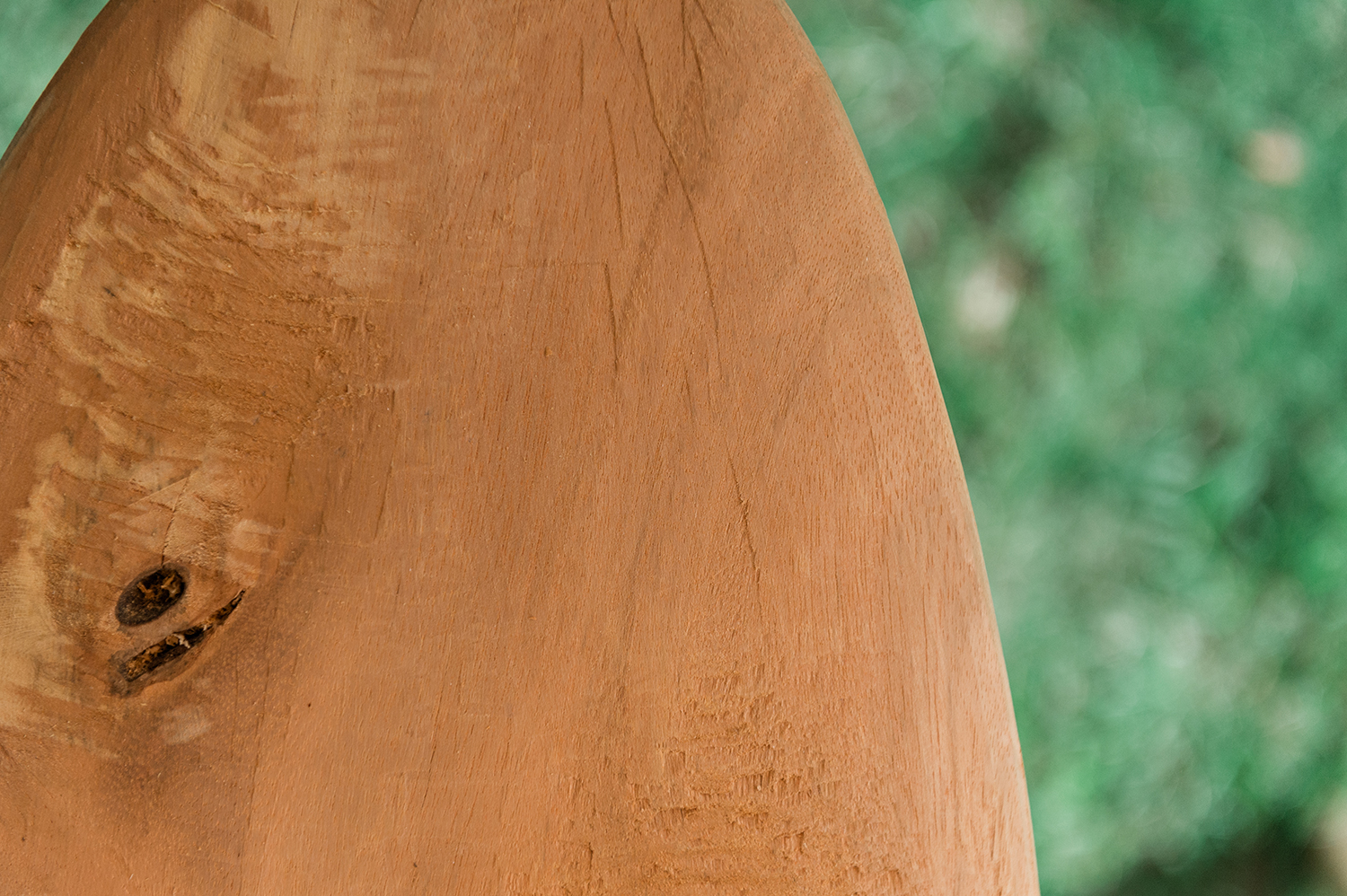
In 1993, Tom was compelled to carve his first board, also a kīko‘o made of wiliwili, an endemic lightweight wood. He buried the finished piece in a taro field to absorb the color and mana of the earth. It was a replica of his late father’s ill-fated work, and he made it from memory.
“Many years later, I could still see it in my mind,” he says.
By that time, his father was ailing, having suffered a couple of strokes and several heart attacks.
“I took him down to the beach and showed him the board,” says Tom, teary-eyed. “What a moment that was.”
In the Waikīkī surf, Savanna is improving her skill on the kīko‘o, the third-ever board Tom carved. Heavy and finless (skegs weren’t invented until the 1930s), it nevertheless has incredible flotation, and the potential for a magical kind of glide that would make her feel one with the wave.
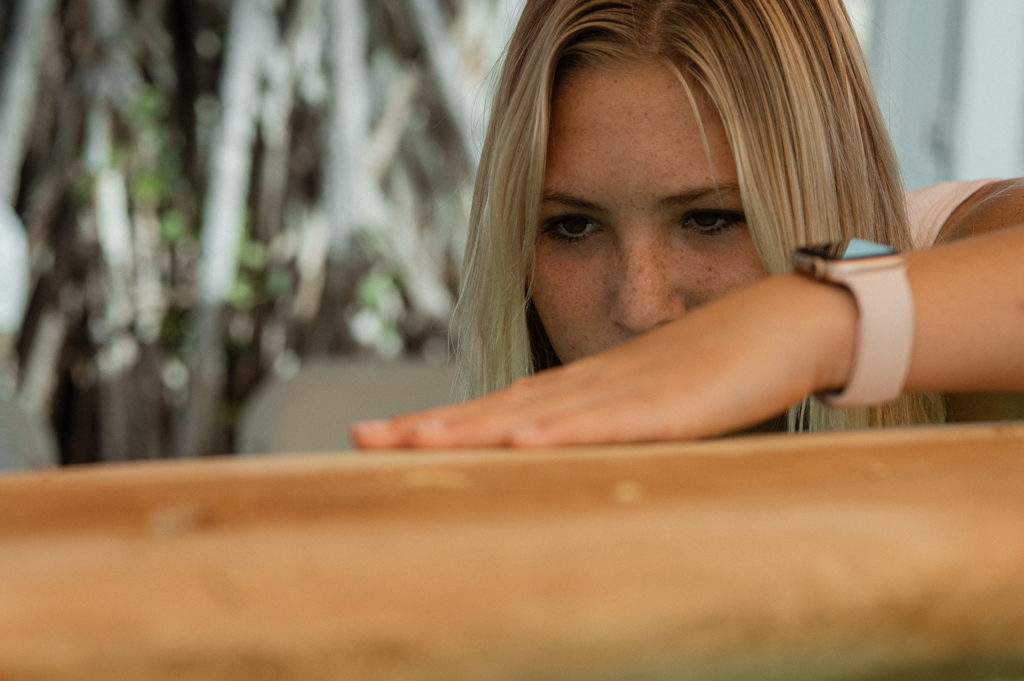
Alas, the kīko‘o is only on loan until she finishes carving her own wooden board, a kīoe made from an ‘ulu tree that was blessed in a traditional ritual. The kīoe has a slimmer profile than the kīko‘o, and Savanna has been carving its convex deck and bottom, pointy nose, and narrow tail for the better part of a year using a modern spoke shave from Home Depot and a block plane from 1907.
“Once you get into a rhythm, it’s relaxing,” she says. “But you can’t zone out when there’s a blade involved.”
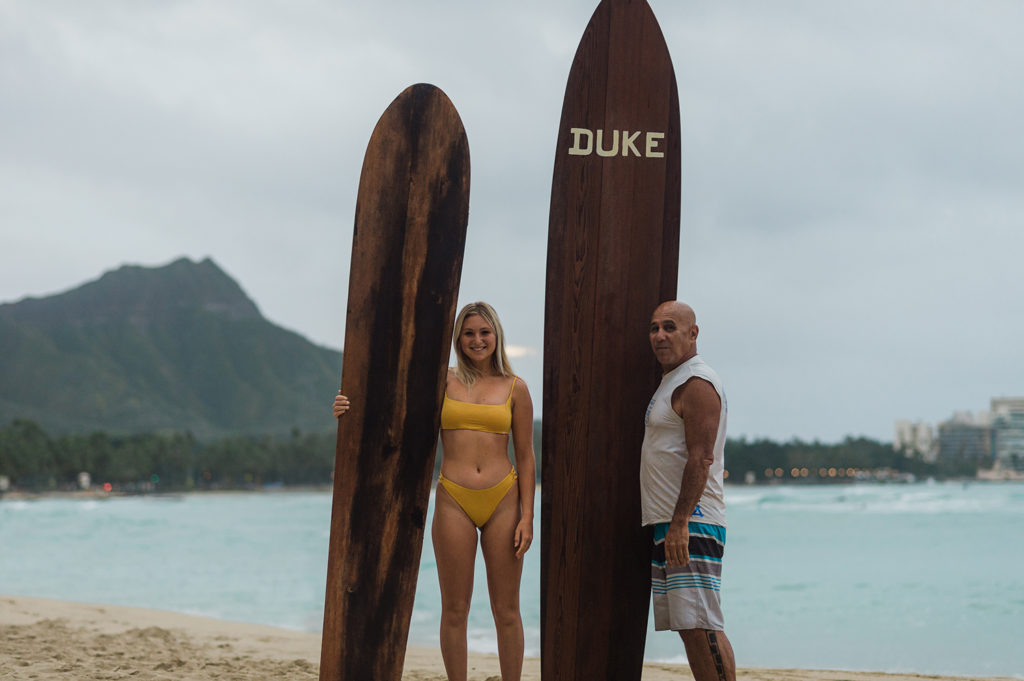
Learning to ride the kīoe might be a similarly calming and focused experience, one that would require more time in the water with her teacher.
“I’m always trying to find the shortest route to the North Shore to surf,” she says.
“But maybe I should be finding the shortest route to anywhere Papa is instead.”

